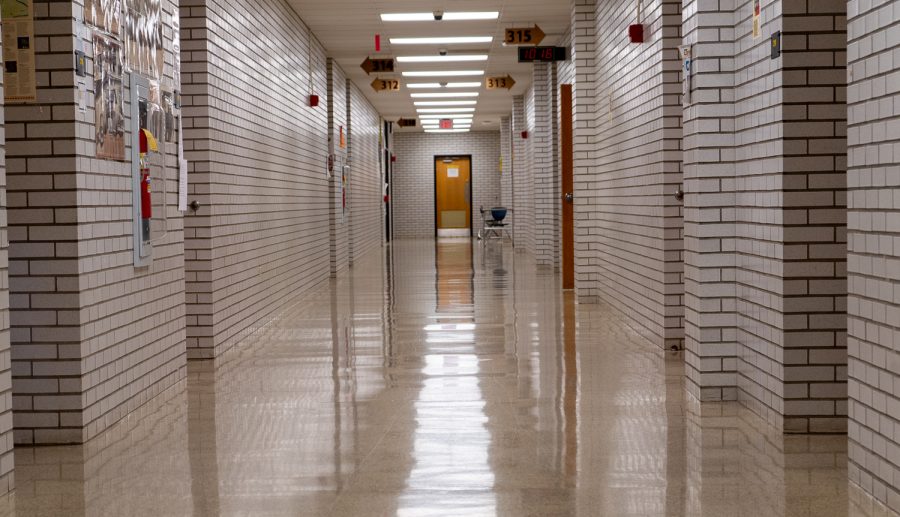The Outrageous Hypocrisy of School Closures
Schools across the country are closing while other industries remain virtually untouched.
The NASH hallways are empty, but most other public areas are packed with people.
On November 19th, all of New York City’s public schools closed their doors and moved to full remote learning. The sudden shift was because the city had reached a three percent coronavirus test positivity rate. It was a threshold set in the summer, and it was meant to assure students and staff that the city wanted to keep them safe.
The only problem is that there was little to no evidence that COVID-19 was spreading through New York’s schools. And yet, 1.1 million kids had their lives turned upside down.
Throughout the rest of the city, though, things remained largely unchanged. In fact, New York state still allowed restaurants and gyms to stay open, despite the increase of cases.
Obviously, Pittsburgh and the rest of the western Pennsylvania region are very different from New York City. But when it comes to school closures, the two places are awfully similar. They’re both forcing students to muddle through remote learning while leaving businesses virtually untouched.
Allegheny County didn’t mandate that any school districts move to full remote learning, but almost every district in the region made the switch and plans to keep students online until at least January. North Allegheny is one of the few exceptions, as it is allowing schools to resume the hybrid model with some temporary closures at NAI and NASH.
I know the pandemic is worse than ever, and I take that seriously. Obviously, there comes a point when keeping schools open is far too dangerous. But I think it’s fair to categorize them as essential. And as long as other non-essential businesses like bars, restaurants, and malls are open, students should have the option to attend in-person school.
I’m not even saying all high school should be back in session right now — I understand that young adults are much more likely to spread the virus and the rise in cases can be unsustainable. But trying to open elementary schools, offering hybrid models, and giving kids the best chance possible at attending in-person only seem right, especially considering that, overall, schools have not been linked to the nationwide rise in cases.
It may seem childish — just because the rest of the world is open and transmitting COVID-19 doesn’t mean we should throw all caution to the wind. The world isn’t fair. Two wrongs don’t make a right. I get all that.
However, the thing journalism has taught me the most is that it’s okay to see a situation as unfair and characterize it as such. Accepting that the world is simply corrupt and messy is a slippery slope. Oftentimes, our childish instincts are what tell us that something isn’t right. It’s the mature cynic inside of all of us that gives morally grey excuses.
So, yeah, maybe it is petulant, but when I see schools across the region shut down while 1.17 million Americans get to fly around the country for Thanksgiving, I’m upset. When I’m told I can’t even go to school for two days a week but the mall can be bustling with holiday shoppers with little to no social distancing, I’m confused.
And when I think about all the students who relied on school as a safe place, I’m just sad. There are kids who knew they would have at least one meal that day only because of school. There are kids who went to school and felt cherished and cared for in a way they never did at home. I’m aware that their suffering right now is far greater than mine, and the fact that any kid has to go through that breaks my heart.
We can still grab an indoor seat at most restaurants or get on an airplane. People can attend packed political rallies with no masks or host big parties. Sports teams can still practice and go all the way to the championships.
All while schools are closed. All while first graders learn how to read on Blackboard Collaborate and middle schoolers exposed to real science classes for the first time don’t get to participate in engaging experiments and seniors miss out on the majority of their final year of high school.
It’d be different if I thought shutting down schools was going to help fight the pandemic, but when the rest of the world continues on as if nothing’s wrong, it won’t matter. Making millions of kids struggle across the United States will be pointless.
The economy and people’s livelihoods are important, but so are schools. The economy can be rebuilt, and, if we had a proper federal response to the pandemic, it could even be salvaged now. The government can write a stimulus check to alleviate some of the economic damage. They can’t do anything about the experience and quality education students miss when they have to learn remotely.
I’m not saying open all the doors and disregard public health guidelines. I’m suggesting that we evaluate our priorities as a society and a country. I’m asking that we appreciate the true value of a good education and place it above the need to go out to a bar or a party.
We basically have two options. We either need to accept that we’re at the point in the pandemic where this rise of cases is normal, which obviously is a dangerous path, or we need to prioritize schools being open over businesses and restaurants — at least until we get things under some level of control.
In fact, countries in Europe are doing just that. In October, Germany, France, and Ireland all imposed strict national lockdowns. Bars, restaurants, theaters, and gyms all had to close. However, schools stayed open.
Irish Prime Minister Micheal Martin said he was keeping schools open in order to ensure that students have a bright future without the virus constantly overshadowing their academic endeavors. German Chancellor Angela Merkel cited increased rates of child abuse and domestic violence as reasons to keep schools operating in-person for as long as possible.
There’s a reason that foreign governments are going to extreme lengths to avoid shutting down schools — it’s that they recognize how flawed remote learning is. Studies found that just from last spring’s round of remote learning, most students lost a third of a year of academic progress in reading and a half year of progress in math. Not to mention, the impact was disproportionately worse on low-income students.
In September and October, our nation proved that schools could partially open safely. Sure, it was messy, but for many schools, it was manageable. It wasn’t until the rest of the country fell apart that we started blaming students and altering their lives.
I just hope that our country doesn’t stop trying to give students the option to attend in-person school again. Of course, this can only occur if every single student, teacher, and staff member gets to choose to participate in-person or from home and if universal mask-wearing and social distancing are strictly enforced.
I’m not just limiting that hope to my school. Even if NASH can’t reopen, I still want young kids in the region to attend in-person classes and experience the magic of learning that is going to be so crucial to them in their future. I want students who need school as their safe place to have it again.
Nothing about this situation is fun or ideal or even relatively painless. It’s hard for everyone. But watching our local governments encourage school closures while doing too little to fight the pandemic on all other fronts is frustrating and confusing for students. Such a hypocritical response only makes matters worse.

Kristen Kinzler is a senior at NASH who loves expressing her opinions and drinking excessive amounts of coffee and tea. When she's not writing or rewatching Supernatural for the fourteenth time, she can probably be found playing lacrosse, reading, or watching hockey. She plans to attend Bowdoin College next fall.


